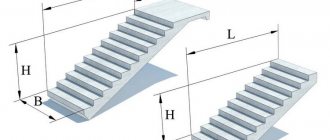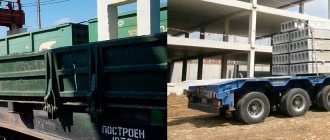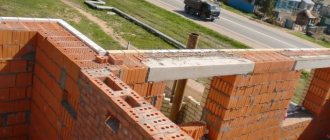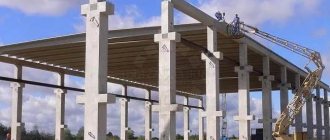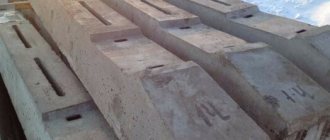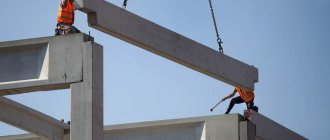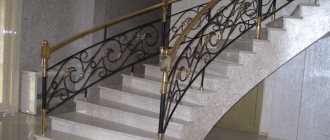GOST 6665-91
INTERSTATE STANDARD
CONCRETE AND REINFORCED CONCRETE EDGE STONES
Specifications
IPC PUBLISHING HOUSE OF STANDARDS Moscow
INTERSTATE STANDARD
| CONCRETE AND REINFORCED CONCRETE EDGE STONES Specifications Concrete and reinforced concrete curbs. Specifications | GOST 6665-91 |
Date of introduction 01/01/92
This standard applies to concrete and reinforced concrete side stones (hereinafter referred to as stones), made from fine-grained (sand) and heavy concrete in accordance with GOST 26633 in the climatic modification UHL in accordance with GOST 15150, intended for separating the roadway of streets and roads from sidewalks, lawns, platforms and etc.
INFORMATION DATA
1. DEVELOPED by the Moscow Construction Committee and the Glavmosarchitecture under the Moscow City Executive Committee
Ministry of Housing and Communal Services of the RSFSR
DEVELOPERS
V.G.Maidel (topic leader), Ph.D. tech. sciences; E.M. Goldin, Ph.D. tech. sciences; L.V.Gorodetsky, Ph.D. tech. sciences; G.M.Khutortsov, Ph.D. tech. sciences; G.I.Korotkikh; N.K. Kozeeva; L.P. Shchepin; R.M.Koltovskaya; I.N.Nagornyak
2. INTRODUCED by the Moscow Construction Committee under the Moscow City Executive Committee
3. APPROVED AND ENTERED INTO EFFECT by Resolution of the State Construction Committee of the USSR dated 04/03/91 N 13
4. INSTEAD GOST 6665-82
5. REFERENCE REGULATIVE AND TECHNICAL DOCUMENTS
| Designation of the referenced technical document | Item number, application |
| GOST 450-77 | 1.3.15 |
| GOST 3282-74 | 4.1 |
| GOST 3344-83 | 1.3.10 |
| GOST 3560-73 | 4.1 |
| GOST 5781-82 | 1.3.18; 1.3.19; applications 2, 3 |
| GOST 6727-80 | 1.3.18; 4.1; appendix 2 |
| GOST 7473-85 | 1.3.7 |
| GOST 8267-82 | 1.3.10 |
| GOST 8736-85 | 1.3.10 |
| GOST 8829-85 | 2.10; 3.1 |
| GOST 9238-83 | 4.1 |
| GOST 10060-87 | 3.3 |
| GOST 10178-85 | 1.3.9 |
| GOST 10180-90 | 2.4; 3.2 |
| GOST 10181.0-81 | 3.5; 3.6 |
| GOST 10181.1-81 | 3.5 |
| GOST 10181.3-81 | 3.6 |
| GOST 10260-82 | 1.3.10 |
| GOST 10834-76 | Appendix 4 |
| GOST 10884-81 | 1.3.18 |
| GOST 10922-90 | 1.3.21, 3.7 |
| GOST 12730.3-78 | 3.4 |
| GOST 13015.0-83 | 1.3.3, 1.3.26 |
| GOST 13015.1-81 | 2.1, 2.3 |
| GOST 13015.2-81 | 1.4 |
| GOST 13015.3-81 | 2.10 |
| GOST 13015.4-84 | 4.1 |
| GOST 13302-77 | Appendix 4 |
| GOST 14098-85 | 1.3.22 |
| GOST 15150-69 | Introductory part |
| GOST 17624-87 | 3.2 |
| GOST 17625-83 | 3.9 |
| GOST 18105-86 | 1.3.3, 2.8 |
| GOST 18343-74 | 4.1 |
| GOST 20259-80 | 4.1 |
| GOST 22362-77 | 3.8 |
| GOST 22690-88 | 3.2 |
| GOST 22904-78 | 3.9 |
| GOST 23009-78 | 1.2.6 |
| GOST 23279-85 | 1.3.21 |
| GOST 23732-79 | 1.3.16 |
| GOST 23858-79 | 3.7 |
| GOST 24211-80 | 1.3.14 |
| GOST 25592-91 | 1.3.11 |
| GOST 25818-91 | 1.3.11 |
| GOST 26134-84 | 3.3 |
| GOST 26433.0-85 | 3.10 |
| GOST 26433.1-89 | 3.10 |
| GOST 26633-85 | Introductory part, 1.3.10, 1.3.11, 1.3.14, |
| GOST 27006-86 | 1.3.6 |
| GOST 28570-90 | 2.4 |
| OST 13-287-85 | Appendix 4 |
| OST 18-126-73 | Appendix 4 |
| TU 6-02-696-76 | » |
| TU 6-03-7-04-74 | 1.3.15 |
| TU 6-36-0204229-625-90 | Appendix 4 |
| TU 13-0281036-05-89 | » |
| TU 81-05-75-74 | » |
| TU 400-1-225 | 4.4 |
| SNiP 2.01.01-82 | 1.3.3 |
This standard applies to concrete and reinforced concrete side stones (hereinafter referred to as stones), made from fine-grained (sand) and heavy concrete in accordance with GOST 26633 in the climatic modification UHL in accordance with GOST 15150, intended for separating the roadway of streets and roads from sidewalks, lawns, platforms and etc.
Installation of concrete side stones: for other types of coatings
LOCAL RESOURCE STATEMENT GESN 27-02-010-02
| Name | Unit |
| Installation of concrete side stones: for other types of coatings | 100 m of side stone |
| Scope of work | |
| 01. Construction of a concrete base with compaction, installation and removal of formwork. 02. Installation of side stones with undercutting, filling the seams and jointing them. 03. Cleaning granite sides. | |
PRICE VALUES
The price takes into account the work requirements for 2000
(Moscow prices), calculated according to the GESN model of
2009
. Indexation of translation into current prices must be applied to the cost.
You can go to the pricing page, which is calculated based on the standards of the 2014 edition with additions 1 The basis for using the composition and consumption of materials, machines and labor costs are GESN-2001
LABOR COSTS
| № | Name | Unit Change | Labor costs |
| 1 | Labor costs of construction workers Grade 2.9 | person-hour | 76,08 |
| 2 | Labor costs for drivers (for reference, included in the price of the EV) | person-hour | 0,68 |
| Total labor costs for workers | person-hour | 76,08 | |
| Workers' compensation = 76.08 x 8.45 | Rub. | 642,88 | |
| Payroll for drivers = 9.64 (for calculating invoices and profits) | Rub. | 9,64 | |
We draw up a resource estimate for GESN with our own hands.
OPERATION OF MACHINES AND MECHANISMS
| № | Cipher | Name | Unit Change | Consumption | Article number Rub. | Total RUB. |
| 1 | 021141 | Truck-mounted cranes when working on other types of construction 10 t | mach.-h | 0,68 | 111,99 | 76,15 |
| 2 | 400001 | Flatbed vehicles, load capacity up to 5 tons | mach.-h | 0,04 | 87,17 | 3,49 |
| Total | Rub. | 79,64 | ||||
CONSUMPTION OF MATERIALS
| № | Cipher | Name | Unit Change | Consumption | Article number Rub. | Total RUB. |
| 1 | 101-1805 | Construction nails | T | 0,001 | 11978 | 11,98 |
| 2 | 102-0038 | Unedged softwood beams, length 4-6.5 m, all widths, thickness 100, 125 mm, grade IV | m3 | 0,17 | 880 | 149,60 |
| 3 | 401-0006 | Heavy concrete, class B15 (M200) | m3 | 5,9 | 592,76 | 3 497,28 |
| 4 | 402-0004 | Ready-made masonry cement mortar grade 100 | m3 | 0,06 | 519,8 | 31,19 |
| 5 | 413-9010 | Side stones | m | 100 | 0 | 0,00 |
| Total | Rub. | 3 690,05 | ||||
TOTAL BY RESOURCES: 3,769.69 RUB.
TOTAL PRICE: 4,412.57 RUR.
Look at the cost of this standard as amended in 2022 open page
Compare the price value with the value of FER 27-02-010-02
To draw up an estimate, the price requires indexation of the transition to current prices. The price is based on the GESN-2001 standards, as amended in 2009.
in
2000
.
To determine intermediate and final price values, the DefSmeta
ACCEPTANCE
2.1. Stones are accepted in batches in accordance with GOST 13015.1 and this standard.
2.2. Stones accepted:
according to the results of periodic tests - in terms of strength, crack resistance, frost resistance, water absorption;
based on the results of acceptance tests - according to strength indicators (class of concrete in terms of compressive strength, transfer and tempering strength), compliance of reinforcement products with this standard, strength of welded joints, accuracy of geometric parameters, thickness of the protective layer of concrete to the reinforcement, crack opening width, concrete category surfaces, grades for the workability of the concrete mixture, the volume of entrained air in concrete mixtures with air-entraining additives.
2.3. Periodic loading tests of prestressed stones to control their strength and crack resistance, as well as to determine the tensile strength of concrete in bending, are carried out before the start of mass production of stones and subsequently - when making design changes to them, changing manufacturing technology and quality of materials in accordance with GOST requirements 13015.1.
In the process of mass production of stones, tests for crack resistance by loading, as well as tensile strength during bending, are carried out at least once every 6 months.
2.4. Concrete stones are tested for frost resistance and water absorption when mastering production, changing the nominal composition of concrete, technology, type and quality of materials, but at least once every 6 months.
2.5. The workability of the concrete mixture is checked at least once per shift.
2.6. The volume of entrained air in concrete mixtures with air-entraining additives is checked at least once per shift.
2.7. Stones in terms of the accuracy of geometric parameters, the thickness of the protective layer of concrete to the reinforcement, the location of the reinforcement, the presence of mounting loops, the category of the concrete surface and the width of the opening of technological cracks should be taken based on the results of selective control in accordance with Table 5 for stones made of heavy concrete and in accordance with Table 6 - for stones made of fine-grained concrete made using the vibrocompression method.
Table 5
PC.
| Batch size | Volume first sample | Volume second sample | Rejection number | |
| for the first sample | for two samples | |||
| Up to 90 | 3 | 3 | 1 | 2 |
| From 91 to 150 | 5 | 5 | 1 | 2 |
| » 151 » 280 | 8 | 8 | 1 | 2 |
| » 281 » 500 | 13 | 13 | 3 | 4 |
| » 501 » 1200 | 20 | 20 | 4 | 5 |
| » 1201 » 3200 | 32 | 32 | 6 | 7 |
| St. 3200 | 50 | 50 | 8 | 9 |
Table 6
PC.
| Batch size | Sample size | Rejection number |
| Up to 1200 | 5 | 2 |
| St. 1200 | 8 | 3 |
A batch of stones not accepted based on the results of sampling must be accepted individually. In this case, the acceptance of stones must be carried out according to the indicators for which the batch was not accepted.
The possibility of using stones that do not meet the criteria for strength and frost resistance is established by the design organization.
2.8. The strength of concrete stones is monitored according to GOST 18105.
2.9. The consumer has the right to carry out a control check of the compliance of the stones specified in the order with the requirements of this standard.
2.10. Quality document - according to GOST 13015.3. In the quality document, it is necessary to indicate the grade of concrete for frost resistance and the water absorption indicators of concrete.
At the consumer’s request, the results of control tests of stones for strength and crack resistance according to GOST 8829 are included in the quality document.
Road curb
The most popular decorative road element, which occupies up to 90% of the total volume of material used. The average service life is 15-20 years.
| Category | Overall dimensions, mm (length*height*width) | Weight, kg | Strength category | Frost resistance, cycles | Concrete category |
| BR 100.30.115 | 1000*300*150 | 196 | M400 | 200 | At 30 |
In a number of places, with accompanying operating characteristics, the warranty period is increased to 40 years.
CONTROL METHODS
3.1. Load testing of stones to control their strength and crack resistance is carried out according to GOST 8829.
The diagram and position of the stone during testing are shown in Figure 1 and Table 7.
— control load
Damn.1
Table 7
| Brand of stone | Position of the stone during testing | , mm | , mm |
| BR300.30.15 | |||
| BR300.30.18 | 3000 | 750 | |
| BR300.45.18 | |||
| BR300.60.20 | |||
| BR600.30.15-A-IV | |||
| BR600.30.18-A-IV | 6000 | 1500 | |
| BR600.45.18-A-IV(AV) | |||
| BR600.60.20-A-IV(AV) | |||
| BU300.30.29 | |||
| BUP300.30.32 | 3000 | 750 | |
| BUP300.30.29 | |||
| BUP300.30.32 | |||
| BUP600.30.32 | 6000 | 1500 |
The maximum width of crack opening when testing for strength and crack resistance should not exceed 0.2 mm.
Load testing of stones is carried out after the stones reach compressive strength at 28 days of age.
3.2. The compressive and tensile strength of concrete during bending should be determined according to GOST 10180 or GOST 17624, or GOST 22690.
When producing stones using the vibrocompression method, which leads to a change in the composition of concrete, a correction factor is adopted for the strength of the concrete of control samples, established experimentally in accordance with the requirements of GOST 10180. In this case, the correction factor should be taken at least 1.
3.3. Frost resistance of concrete is determined according to GOST 10060 or GOST 26134 by saturating concrete stone samples before testing with a 5% aqueous solution of sodium chloride.
In this case, a decrease in the compressive strength of concrete samples is allowed by no more than 5% and a loss of their mass by no more than 3%.
3.4. Water absorption of concrete stones is determined according to GOST 12730.3.
3.5. The workability of the concrete mixture is determined according to GOST 10181.0 and GOST 10181.1.
3.6. The volume of entrained air in a concrete mixture with water-entraining additives is controlled according to GOST 10181.0 and GOST 10181.3.
3.7. Inspection of welded reinforcement products should be carried out in accordance with GOST 10922 and GOST 23858.
3.8. The tension force of the reinforcement, controlled at the end of the tension, is measured according to GOST 22362.
3.9. The dimensions and position of reinforcement products in stone, the thickness of the protective layer of concrete before the reinforcement should be determined according to GOST 17625 or GOST 22904.
In the absence of the necessary instruments, it is possible to determine the specified parameters by cutting grooves and exposing the reinforcement of the stone, followed by sealing the grooves and places where the reinforcement is exposed with fine-grained concrete or the concrete from which the stone is made.
3.10. Dimensions, deviations from straightness and perpendicularity of stones, the width of opening of technological cracks, the dimensions of shells, sagging and edges of concrete should be checked by the methods established by GOST 26433.0 and GOST 26433.1.
The length of curved stones is measured along the upper edge of the convex side, and the deviation of the front surface profile from the nominal curvature is checked with a template.
How to install curbs correctly, before or after laying paving slabs?
It is difficult to answer this question unequivocally, because each option has pros and cons.
- We install immediately.
This option is good for beginners. Borders clearly frame the area to be improved and simplify the task of maintaining boundaries. To save paving elements, it is necessary to calculate the distance between the curbs, which should be a multiple of the width of the paving stones. When making calculations, it is necessary to remember that there is a gap between the paving elements - 2-4 mm. For beginners, it is better to use the dimensions of a ready-made track. - We install it after laying the paving stones.
This choice allows you to use the tiles rationally and avoid sawing them.
TRANSPORTATION AND STORAGE
4.1. Stones are transported by any type of transport in accordance with the requirements of GOST 9238 and “Technical conditions for loading and securing cargo.”
Stones in open cars and on trucks should be transported in container packages in accordance with GOST 20259 or on pallets in accordance with GOST 18343, bandaged with steel tape in accordance with GOST 3560 or wire in accordance with GOST 3282, ensuring rigid fixation and safety of the stones.
4.2. It is prohibited to load stones in bulk and unload them by dropping them.
4.3. Stones should be stored in a finished product warehouse, sorted by grade in stacks or bags up to 2 m high.
4.4. Stones in stacks must be laid on wooden pads with a thickness of at least 30 mm according to TU 400-1-225 or pads made of other materials that ensure the safety of the stones, located vertically one below the other at a distance of 0.2 the length of the stone from the end. The bottom row of stones should be laid on transverse spacers with a width of at least 80 mm.
garden border
As a rule, this type of decorative curb is used in private landscape design. In the visual part, the garden curb has all the signs of a vibro-compressed material, in contrast to the vibro-cast material used to produce a highway or similar road type.
| Designation | Overall dimensions, mm (length L*height B*width H) | Weight, kg | Strength class | Frost resistance, cycles | Type of concrete |
| BR 100.20.8 | 1000*200*80 | 36 | M300 | 200 | At 30 |
| BR 500.20.8 | 500*200*80 | 18 | M300 | 200 | At 30 |
The period of technical operation of such a curb stone is at least 15-20 years. In some climatic areas (temperate and southern latitudes), the service life can be increased to 50 years.
Prices for installing curbstones in the estimate
Prices for installing curbs in the estimate are applied based on the standards from the FER27 collection. This collection combines many norms related to the construction of highways. It should be noted that the standards of the collection take into account not only the creation and arrangement of roads made of asphalt, but also those made of other materials.
As part of this collection, you can find several pricing options for estimates for curb installation. One option is the standards from table FER27-02-010. This table takes into account the construction of side stones made of various materials.
Thus, the norm under the code FER27-02-010-01 is the price in the estimate for the installation of concrete curbs with cement-concrete pavements, and the norm FER27-02-010-02 can determine the cost of installing concrete curb stones with other types of pavements. Standards 03 and 04 in table FER27-02-010 take into account the installation of curbs made of natural stones on the same types of coatings as in norms 01 and 02.
Despite the different types of materials used in the prices in the estimate for the installation of curb stones, the composition of the work of all four standards in table FER27-02-010 is identical. First of all, the scope of work involves the installation of a concrete foundation. This manipulation must be carried out with simultaneous installation and disassembly of the formwork and compaction.
Further, the prices in the estimate for the installation of curbs from table FER27-02-010 include the actual installation of curb stones of the selected type and their trimming. Work on filling seams and jointing them is also part of the scope of work of the norms of the specified table. Cleaning of granite sides is included in the final stage of work according to the standards in FER27-02-010.
The volume of work in the above prices in the estimate for installing curbs is measured in 100 m. It should be noted that the resource part of all standards in table FER27-02-010 takes into account most of the materials necessary for the correct execution of work. However, the brand and cost of the side stones themselves are not taken into account in the standards and must be included in local estimates, local resource estimates and estimates in Form No. 4 separately based on data from the design documentation.
Figure 1. Price in the estimate for installing a curb
The next table in the FER27 collection, which contains prices for estimates for the installation of curb stones, is table FER27-02-011. This table contains the only standard for the installation of side granite stones of the ZGP type. The normal volume of work, as in the norms of the previous table, is measured in 100 m. However, the scope of work is more complex and labor-intensive.
The scope of work in the estimate for the installation of curbs under the code FER27-02-011-01 includes loading of the material, its transportation to the installation site at a distance of 150 m and unloading. Further, the standard provides for the placement of stones along the installation line, the manual installation of a concrete installation layer and the installation of curbs.
In addition, the work of the FER27-02-011-01 standard includes manual edging of stones, tamping with concrete mixture and compaction. Filing and chipping are also part of this standard. The grouting of seams and the preparation of mortar for this are indicated as standard upon completion of the work in the price estimate for the installation of curbs.
Another table in which you can choose the price in the estimate for installing curbstones is FER27-02-015. It contains three standards that take into account the installation of side stones made of monolithic concrete. In this case, the installation method involves the work of a concrete paver-planner. The difference in standards lies in the type of site on which the work is carried out.
Norm FER27-02-015-01 is the price in the estimate for installing curbs on a combined site. Standard 02 in the table takes into account work on a straight section, and standard FER27-02-015-03 on a radial section. The unit of work measurement in the table FER27-02-015 is 10m.
As for the composition of the work and prices in the estimate for installing a curb from table FER27-02-015, it is distinguished by a wide range of manipulations. At the initial stage, the standards provide for the installation of stands under the string, balancing and tension of the string. After this, the concrete paver is balanced and the concrete is unloaded.
Further, the prices in the estimate for installing curbs provide for laying the concrete mixture and monitoring the surface with correction of seams. Coating the finished product with mastic, removing strings and cutting shrink seams are a mandatory part of all three standards in table FER27-02-015. Sealing seams and watering stones are also included in the price list.
Order goods from StroyDomInvest
Regardless of what kind of border you need: garden, sidewalk or ordinary, you will buy the right product from our company. We guarantee its compliance with government standards. To make cooperation with us more profitable, we offer:
- products in any design and in any quantity;
- low prices, the opportunity to get an additional discount;
- installation services for garden borders and paving slabs.
Be sure that when purchasing goods from StroyDomInvest, you will be satisfied with the results of cooperation, you will be able to choose any required type, color and size of curbstone.
Manufacturers
The territories of the CIS countries are rich in granite deposits of the highest quality. Many stones are unique - they have no analogues in the world in terms of color and texture. The increased strength is explained by the fact that Russia, Belarus and Ukraine are characterized by significant temperature fluctuations at different times of the year - this process helps strengthen and harden the rock. In terms of quality, Russian stone is in no way inferior to granite mined in Asia and South America, while being significantly higher in cost. Even Chinese manufacturers known for their dumping policies cannot make better price offers. You don’t even need to mention European countries - their granite curbs are much more expensive.
All activities in the extraction and processing of granite are strictly regulated throughout the world, which is why Russia several years ago adopted new GOSTs, which increased the requirements for the quality of stone and reduced the permissible errors of finished borders.
Today, slab size deviations are 0.2%. This is slightly lower than the European level (0.1%), but at the same time higher than the Chinese one. This creates a significant competitive advantage for the products of the Russian manufacturer and makes the products of our enterprises in demand among domestic consumers.
As for manufacturers, it should be noted that they have earned the trust of consumers. The first lines in the ratings are occupied by “Danila Master”, “Yurgan Stroy”, “Stroykamen”, “Rosgranit” are also known among consumers. Antique Trade, Albion Granite, and Sovelit are not losing ground.
Features of the use of different types of products
It has been used for centuries in various fields:
- in road construction to separate the pedestrian traffic area from the roadway. This allows you to create safe conditions for movement, and also fixes the road surface;
- for the improvement of recreation areas, landscape design, as well as for the design of garden plots. It separates green spaces, protecting the soil from being washed away by water.
The product is made from high-quality concrete mixture using the method of semi-dry vibration pressing, which allows for improved performance characteristics. The regulatory document allows for production from granite stone, as well as reinforced concrete.
Curbs made by semi-dry vibrocompression have high quality characteristics
GOST classifies edge stones according to types, which differ in their area of application:
- road. It is in demand during the construction of roads in populated areas, when creating a boundary between the roadway and the pedestrian area. The stone ensures the integrity of the road surface, making it difficult to move under loads, and also strengthens the paving surface;
- mainline It is used in the field of road construction in the construction of highways located outside populated areas. According to the standard, it is made of high-grade concrete, which increases its strength and service life. Features increased length;
- sidewalk. Indispensable when carrying out measures to improve park areas, city squares, paths, squares, sidewalks. Provides protection for lawns, flower beds, and flower beds from erosion as a result of intense precipitation. Characterized by a variety of shapes and colors;
- garden. The cross-sectional shape resembles a paving stone, but has an increased length and a reduced width compared to a sidewalk stone. It is used when creating recreation areas, landscaping parks, designing public gardens, as well as decorative finishing of lawns in summer cottages;
- lawn It is a fairly popular type of curb stones. It is used as a decorative element when designing paths and flower beds located in summer cottages, as well as when laying out garden areas. It is characterized by a reduced size in height and low weight.
The main types of vibropressed curbs are main curbs, road curbs and garden curbs.
Production
For the manufacture of road curbs, concrete of the so-called heavy grades is mainly used, which correlates with the use of reinforcement. In the latter case, it is assumed that steel frames will be used, which are created using AIII and AI reinforcement, as well as BpI reinforcing wire. In order to increase the strength of the reinforcement, steel products that have undergone heat treatment can be used.
The actual process of producing road curbs is based on the following types of work:
- prepare a concrete mixture (having a composition depending on the purpose of the side stone), which is then mixed;
- Pigments are added as necessary to give a particular color to the products;
- the mixture is poured into molds of various configurations, for example, a square or a semicircle, which also depends on the purpose of the final product;
- start the molding process using the vibration pressing method;
- after this, the products enter special chambers for drying;
- finished borders are removed from the molds.
A special feature of the side stone is that each copy is supplemented with mounting loops that simplify loading and unloading operations.

